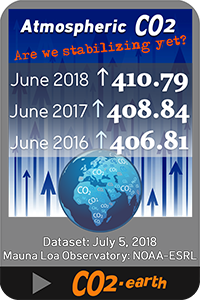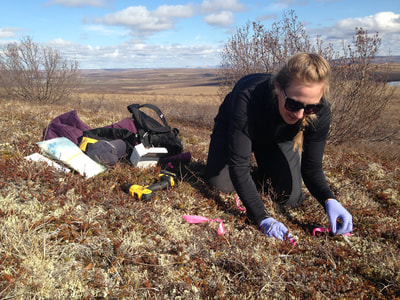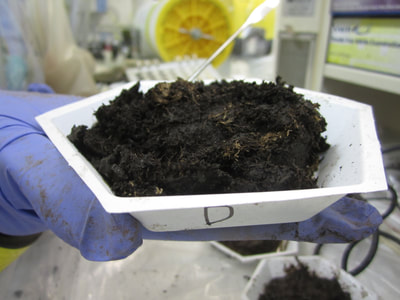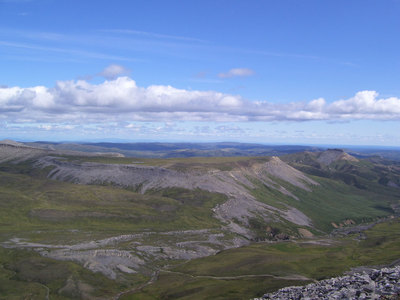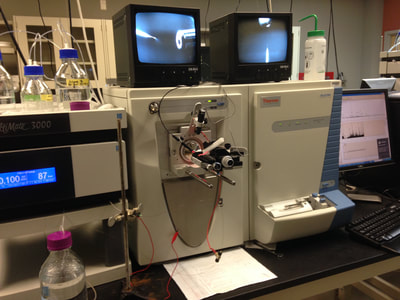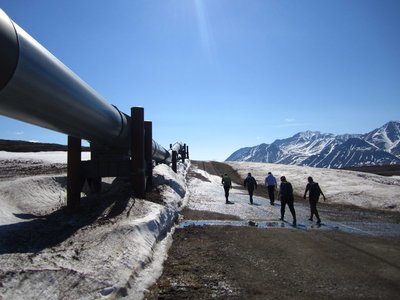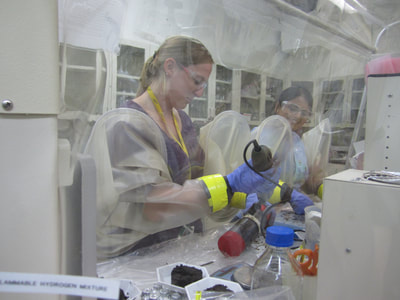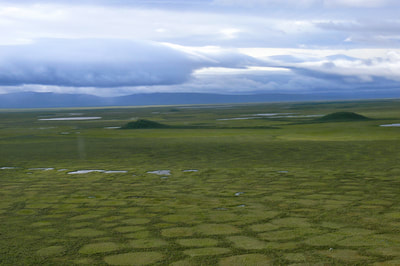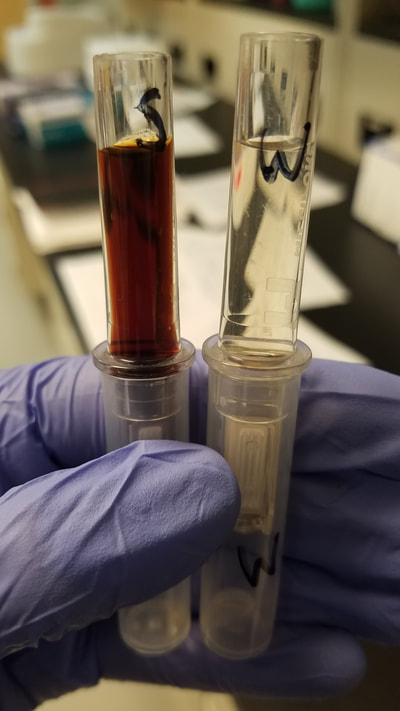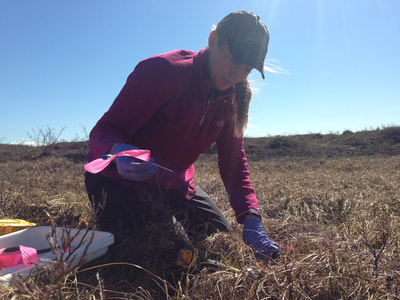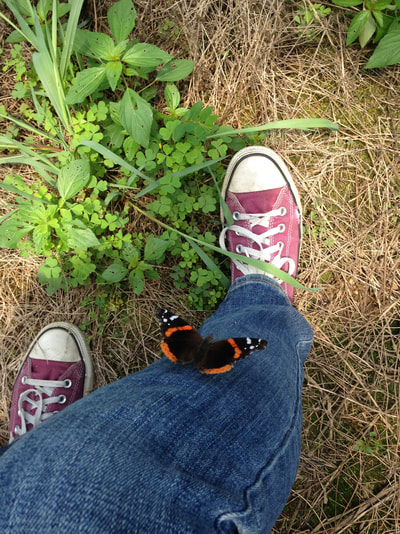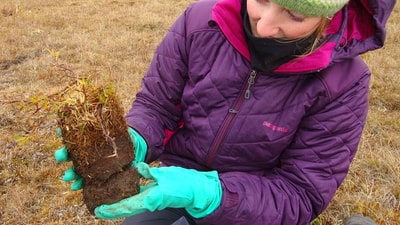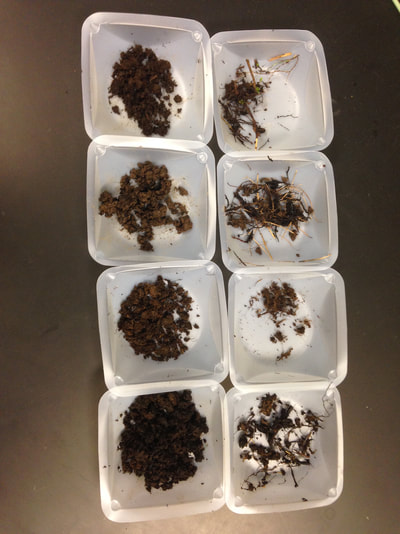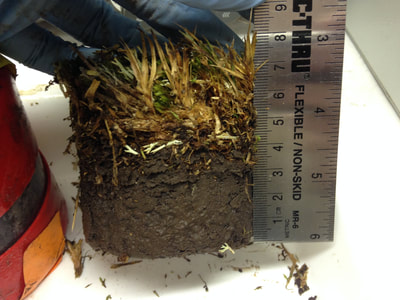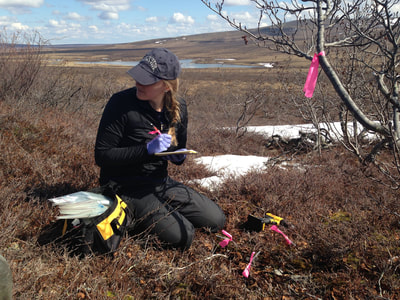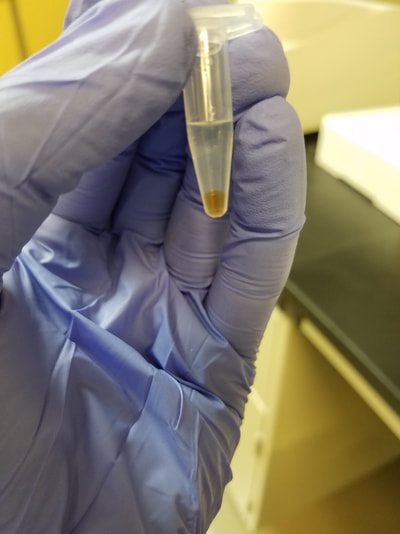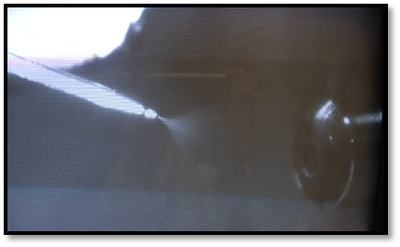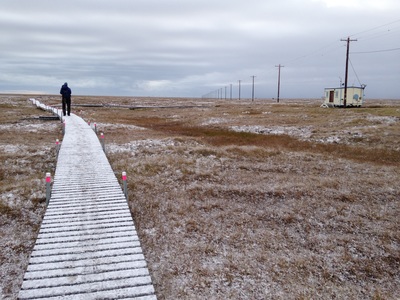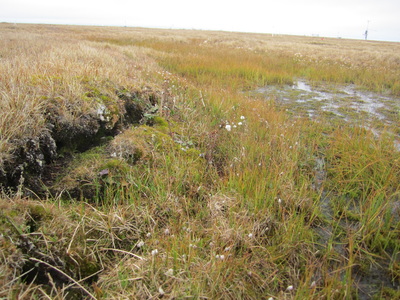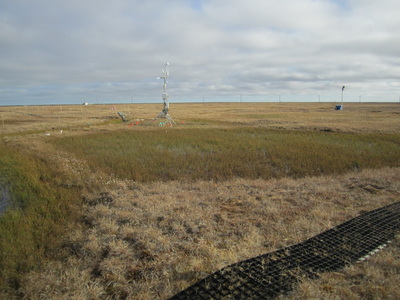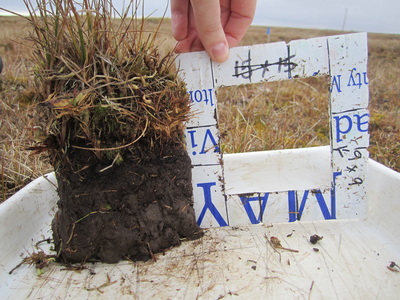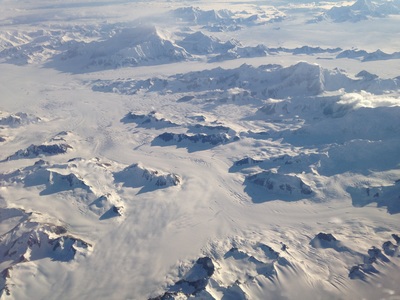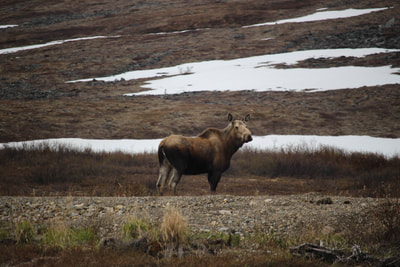Why the Arctic?The Arctic is warming twice as fast as the rest of the planet. Warmer temperatures at northern latitudes have led to increased sea ice recession, decreased snow and ice cover on land, and increased areas of frozen ground beginning to thaw which is already having dramatic impacts on energy development, national security, social and environmental sustainability, and global ecosystem functioning.
Arctic soils contain over twice as much carbon as what is found in the atmosphere. This is because of environmental conditions (short summers and long, cold, dark winters) that have slowed the decomposition of soil organic matter. As the ground continues to thaw due to warming, this carbon-rich organic matter is becoming available to soil microbial communities for decomposition. The process of breaking down this previously frozen material could release massive amounts of carbon dioxide and methane, two potent greenhouse gases contributing to global warming, into the atmosphere thereby creating an irreversible feedback to climate change. This is one reason why the Arctic is often referred to as a “tipping point." However, thawing organic matter may also release nutrients into the soil which could promote plant growth and productivity, or carbon intake via increased photosynthesis rates. This would create a negative feedback to the effects of warming, and could help maintain these soils as a 'sink' for atmospheric carbon. Understanding what controls these processes, and figuring out if the Arctic will remain a net "sink" or become a net "source" of carbon is important to ecosystem and global scale models that predict how our climate is going to change in the future. With more detailed data, and therefore more reliable models, scientists can then work with policymakers to make more informed decisions about our energy and environmental future both in the Arctic and around the world. How can we use chemistry to help answer these questions?As the organic matter thaws and warms, both plant and microbial communities will compete for the dissolved organic nutrients that are released. We still don't understand what controls this competition and how it may impact the larger ecosystem.
How much dissolved organic matter (DOM) can be found in these terrestrial systems? What forms of DOM are available to either the plant or microbial communities? Do plants, or microbes, prefer certain forms of DOM over others? How does the chemical composition, plant uptake, or microbial decomposition of this labile pool change over space, time, or under warming conditions? My graduate research used a combination of high-throughput and highly sensitive techniques to measure DOM availability in these systems. Part of my dissertation work was to develop a robust, high-performance mass spectrometry workflow to characterize and monitor how DOM varies across the landscape, with soil depth, and under different environmental conditions. This data can then be used to help improve the predictive capabilities of ecosystem and climate models developed by the NGEE-Arctic modeling team. |
Publications
Ladd, M.P., Giannone, R.J., Abraham, P.E., Hettich, R.L. (2019) Evaluation of an untargeted nano-liquid chromatography-mass spectrometry approach to expand coverage of low molecular weight dissolved organic matter in Arctic soil. Scientific Reports 9, 5810. https://doi.org/10.1038/s41598-019-42118-9
Campa, M. F., Techtmann, S., Ladd, M. P., Yan, J., Patterson, M., Garcia de Matos Amaral, A., Carter, K. E., Ulrich, N., Grant, C., Hettich, R. L., Lamendella, R., Hazen, T. (2019) Surface Water Microbial Community Response to the Biocide 2,2-Dibromo-3-Nitrilopropionamide, Used in Unconventional Oil and Gas Extraction. Applied and Environmental Microbiology. https://aem.asm.org/content/85/21/e01336-19
Ladd, M.P., Reeves, D., Iversen, Poudel, S., C. M., Wullschleger, S. D., Hettich, R. L. (in prep) Untargeted exometabolomics reveals biogeochemical hotspots with vegetation and polygon type in Arctic tundra soils. Plant and Soil.
Ladd, M.P., Wullschleger, S.D. (2015) Challenges and Opportunities of Interdisciplinary Teamwork for Early Career Arctic Scientists. Arctic Research Consortium of the United States (ARCUS) Witness the Arctic. Fall Issue 3.
Darrouzet-Nardi, A., Ladd, M.P., Weintraub, M.N., (2013) Fluorescent microplate analysis of amino acids and other primary amines in soils. Soil Biology and Biochemistry, v. 57, p. 78.
Ladd, M.P., Griffith, W. P. (2011) Sequence characterization of otter hemoglobin using a combination of bottom-up approach mass spectrometry and x-ray crystallography. University of Toledo Honors College Theses, 95 p.
Campa, M. F., Techtmann, S., Ladd, M. P., Yan, J., Patterson, M., Garcia de Matos Amaral, A., Carter, K. E., Ulrich, N., Grant, C., Hettich, R. L., Lamendella, R., Hazen, T. (2019) Surface Water Microbial Community Response to the Biocide 2,2-Dibromo-3-Nitrilopropionamide, Used in Unconventional Oil and Gas Extraction. Applied and Environmental Microbiology. https://aem.asm.org/content/85/21/e01336-19
Ladd, M.P., Reeves, D., Iversen, Poudel, S., C. M., Wullschleger, S. D., Hettich, R. L. (in prep) Untargeted exometabolomics reveals biogeochemical hotspots with vegetation and polygon type in Arctic tundra soils. Plant and Soil.
Ladd, M.P., Wullschleger, S.D. (2015) Challenges and Opportunities of Interdisciplinary Teamwork for Early Career Arctic Scientists. Arctic Research Consortium of the United States (ARCUS) Witness the Arctic. Fall Issue 3.
Darrouzet-Nardi, A., Ladd, M.P., Weintraub, M.N., (2013) Fluorescent microplate analysis of amino acids and other primary amines in soils. Soil Biology and Biochemistry, v. 57, p. 78.
Ladd, M.P., Griffith, W. P. (2011) Sequence characterization of otter hemoglobin using a combination of bottom-up approach mass spectrometry and x-ray crystallography. University of Toledo Honors College Theses, 95 p.
Invited Presentations
Ladd, M.P., Iversen, C.M., Wullschleger, S.D., Hettich, R.L. (2018) Digging deeper: Exometabolomics reveals biogeochemical hotspots with depth and by vegetation type in Arctic tundra soils. American Chemical Society’s Glass City Chemistry Conference, Toledo, OH.
Ladd, M.P., Wullschleger, S.D., Hettich, R.L. (2017) Development and evaluation of a nontargeted metabolomics approach to identify biogeochemical hotspots in Arctic soils. Southeast Regional Meeting of the American Chemical Society, SERMACS, Charlotte, NC.
Orr, F.L., Ladd, M.P., Beegle, J., Callao, D., Mallow, A., Bodenheimer, A. (2016) Panel: Entrepreneurship and Graduate Education to Drive Innovation. SE Regional Energy Innovation Meeting, Chattanooga, TN.
Ladd, M.P., Varmus, H., Schmidt, B.P., McNutt, M. (2015) Panel discussion: Science Communication Overkill? Lindau Nobel Laureate Meeting, Lindau, Germany.
Ladd, M.P., Wullschleger, S.D., Hettich, R.L. (2017) Development and evaluation of a nontargeted metabolomics approach to identify biogeochemical hotspots in Arctic soils. Southeast Regional Meeting of the American Chemical Society, SERMACS, Charlotte, NC.
Orr, F.L., Ladd, M.P., Beegle, J., Callao, D., Mallow, A., Bodenheimer, A. (2016) Panel: Entrepreneurship and Graduate Education to Drive Innovation. SE Regional Energy Innovation Meeting, Chattanooga, TN.
Ladd, M.P., Varmus, H., Schmidt, B.P., McNutt, M. (2015) Panel discussion: Science Communication Overkill? Lindau Nobel Laureate Meeting, Lindau, Germany.
